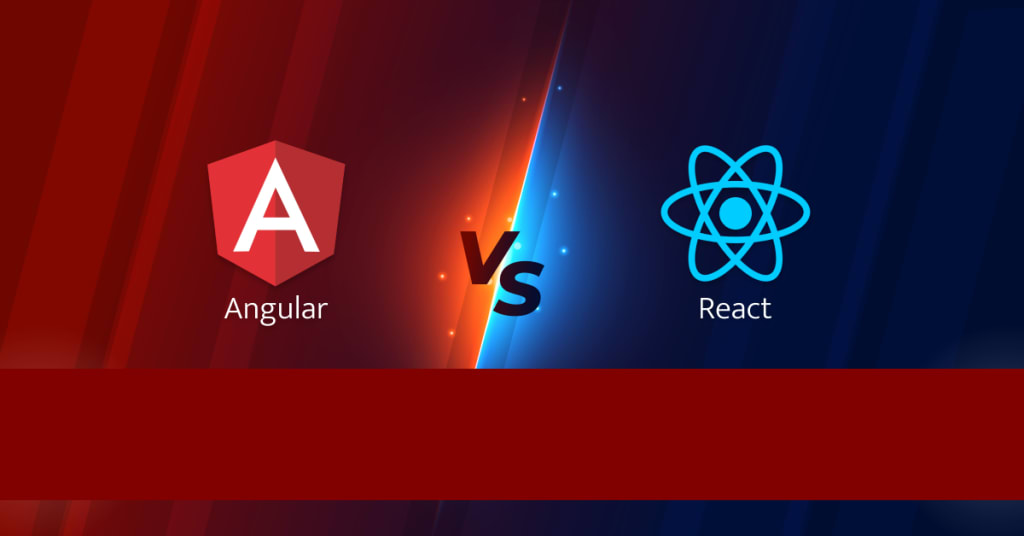
In the front-end development world, there are two major players: Angular and React. There are several differences and similarities between these two but one thing that matters most is, that Angular is a framework whereas React is a library. Though there are advantages of being a library, React comes with pre-defined code snippets which provides faster development. On the other hand, Angular offers a template where developers can build UI components.
In this Angular vs React debate, both have their pros and cons which makes them unique. React is much simpler and easier to use whereas angular is popular because of its speed and flexibility. So, if you are in a dilemma of which one to choose for a front-end project as a Web Application Development Company, we are here for you. eBizneeds provides you with a detailed explanation of both of these popular technologies. Using this information you can make a clear and valuable decision.
Overview of React
React is a JavaScript library created by Facebook in 2013, used for building UIs. This front-end technology has a strong ecosystem of users and supporting tools which provides it with a good position in the market. It is mainly used to build SPAs (Single Page Applications) and also acquires component-based architecture which helps developers to find bugs and customize user interfaces easily. The components in React are reusable and also help speed up the development process. Walmart, Facebook, and Netflix are some major companies that use React as the development framework.
Notable Features of React
Apart from the variety of features that React offers, below will discuss some of the best ones.
Virtual DOM
DOM (Document Object Model) is an object-based portrayal of what a user would see in the browser. By this, developers can make relevant changes in the UI components and this is an important aspect in the UI web development. Because of virtual DOM, React helps in enhancing the overall app performance. This eliminates the useless re-rendering of elements and makes your app load faster.
Extension Support
Being a library, it does not have inbuilt tools which allow users to add numerous extensions. You can add required extensions for building a full-fledged UI application. These extensions help support server-side rendering and mobile app development. Different extensions that you can use are React Native, Redux, and Flux.
One-Way Data Binding
React supports the unidirectional flow of data or simply one-way data binding, allowing developers to keep new components inside older ones. In this manner, the data will only flow from parent to child, hence developers cannot change newer components without modifying parent components. Therefore, developers can effectively control the application locate bugs, and remove issues easily.
Overview of Angular
Angular is a TypeScript framework, a superset of JavaScript, which is used to build interaction UIs of web applications. It was released in 2009 by Google to provide a framework with every required feature in it. There have been several changes in the framework of an improvement but the 2016 update is still dominating. It is easy to debug and also ensures reduced coding efforts for the developers. It is also a component-based architecture, unlike React it provides MVC architecture. You can easily dive your user interfaces into logical and functional components to build complex mobile and web applications.
Notable Features of Angular
Let us have a look at some of the amazing features that Angular provides to its users.
Two-Way Data Binding
The two-way data binding is a powerful feature of Angular for the developers which helps them a lot. It enables seamless synchronization between the user interface and the underlying data model. Whenever you make changes in the UI, it will automatically update the data model and also perform vice-versa. However, it streamlines the development process and also enhances the responsiveness of applications.
Dependency Injection
The dependency injection system of Angular promotes modularity and maintainability by allowing components to declare their dependencies rather than creating them. It provides benefits to a developer by improving the modularity and flexibility of an application. This also helps in simplifying testing, encouraging code reusability, and facilitating the Angular development of scalable and easily maintainable applications.
Angular CLI
The Angular CLI (Command Line Interface) is a powerful tool that simplifies and accelerates the Angular development workflow. It automates various tasks such as project setup, code generation, testing, and deployment. Developers can efficiently create, build, and manage Angular projects with Angular CLI. It also ensures a streamlined and consistent development experience.
Angular vs React - A Comparison
Angular and React are two popular JavaScript frameworks/libraries used for building dynamic web applications, but they differ in various aspects.
Angular, developed and maintained by Google, is a comprehensive and opinionated framework. It provides a full-fledged MVC architecture, promoting a structured development approach. Angular's two-way data binding simplifies the synchronization between the model and view, enhancing real-time updates.
On the other hand, Facebook developed the React library, which is used to build user interfaces. With its component-based architecture, React provides a more adaptable and modular development methodology. It facilitates one-way data flow, which makes it simpler to comprehend how changes to data spread among components.
TypeScript is a superset of JavaScript that is used by Angular to provide greater tools support and static typing. However, JavaScript is the primary language used by React. While React depends on external libraries and tools to provide comparable functionality, Angular has a robust command line interface (CLI) for project administration.
The learning curve may differ, but both frameworks have robust documentation and a vibrant community. For large-scale enterprise applications, Angular is a superior option because it provides a complete solution.
React, being more lightweight, is often preferred for smaller projects, providing developers with greater flexibility and choice in terms of libraries and tools. Ultimately, the choice between Angular and React depends on project requirements, development preferences, and scalability considerations.
Conclusion
Taking an appropriate approach to project development is very important. You must choose the best tools and technologies for your project and in such a case where you need clarification on two frameworks, you need to gain extra knowledge. We have provided details on different aspects of these platforms, so make a wise choice and begin the development process.






Comments
There are no comments for this story
Be the first to respond and start the conversation.